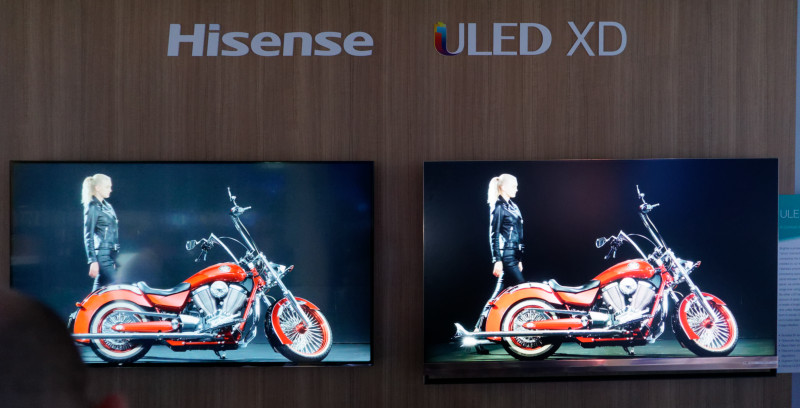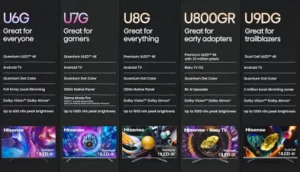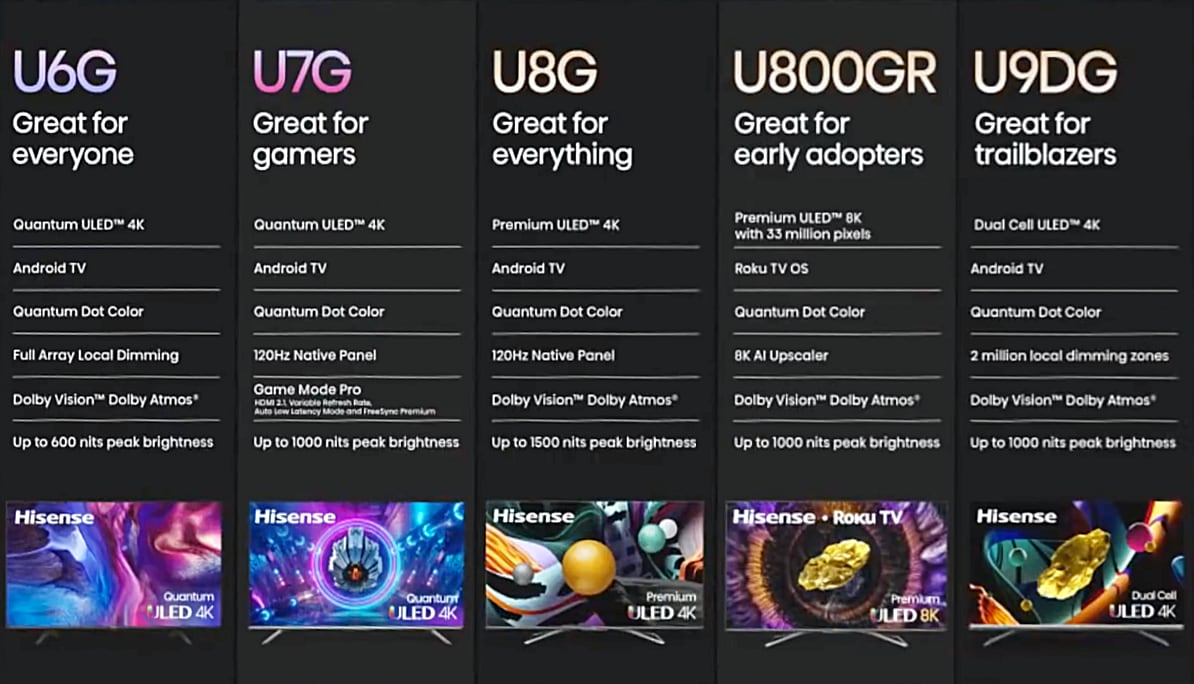
I make no apology for returning to this topic, which has been one I’ve been interested in since Sharp showed a ‘Mega Contrast’ TV at CES in 2007, with 1,000,000:1 contrast. The firm wouldn’t say how they were doing it, but when I returned to the booth after a couple of days of head-scratching, and suggested that they might be using a second panel to control the backlight, the engineers couldn’t help smiling. (If you have a panel with 1,000:1 contrast and a backlight modulator that also has 1,000:1, by combining them, you can get 1,000,000:1 [1000 x 1000])
The idea was just of academic interest until April 2017, when Eizo and then others announced monitors based on the concept for HDR mastering. They were incredibly expensive and very, very power hungry, but they were the best LCDs I had ever seen and based on dual panel LCD panels from Panasonic. As I have previously reported, I was later even more impressed by a comparison of Sony’s beautiful OLED-based mastering monitor with the Eizo monitor that showed the LCD as better than the OLED at brightness beyond a couple of hundred nits. That impressed me as it was the first time that I had ever seen an LCD beat an OLED for image quality. (The issue is colour volume – the LCD could show better saturation at higher luminance than the OLED)
At IBC in 2018, Sony told us that it had decided to no longer pursue the development of OLED for mastering monitors and would concentrate on new products using dual panel technology.
At CES in 2019, there were signs of dual panel LCDs for TV applications and I was able to get this photo of the Hisense prototype. It looked as though things were hotting up. In April, Chris saw a 55″ broadcast monitor from Panasonic that used the idea and there were several demos at Display Week a few weeks later.
 I took this shot of the Hisense Dual Cell LCD at CES 2019. Image:Meko
I took this shot of the Hisense Dual Cell LCD at CES 2019. Image:Meko
However, things petered out a bit as the practical implications (for TV use) of the technology in power consumption and manufacturing sunk in, although I saw reports that some sets might have been sold in China. Further, miniLED was getting better and OLED capacity increased. By last year, nobody was talking much about dual cell for TV.
As I remained interested, I was pleased to understand how plastic LCDs, which could use thin and avoid some of the parallax issues of thicker glass panels, might help the market develop in applications including automotive. Flexenable put out some information about this topic that we reported last year. (Flexenable Boosts Dual LCD for Automotive (and….)
During CES this year, Hisense again mentioned dual cell technology in a press release and in February, I spotted that Visteon and Tianma were both working on dual cell technology for automotive applications. I suspect that they are collaborating, but I have not been able to confirm that. (Another Name for Dual LCDs in Vehicles)
Sometimes, of course, products come to markets for reasons other than normal economics. A Japanese brand once told me that if it brought a product to market and sold some, it could claim back a lot of R&D funding from the government. That would explain the 65″ set that cost more than $50K, if I remember correctly. The Hisense set could be coming to market on the same basis.
I’d like to believe that dual cell might find a place in part of the market as it looks good! However, there are challenges in cost, complexity and power consumption. It can be challenging, as I understand it, to get good wide viewing angle performance. At one time, I wondered if you could make a set that used just three substrates and polarisers rather than two full cells with four sheets, but I heard that this wasn’t possible. That would have helped with cost.
Using a FullHD modulation panel with an UltraHD front panel would help Hisense to minimise power consumption, but the technology does suffer from the long term issue of power on LCDs that the backlight has to be on all the time. PDPs, OLEDs and miniLED sets only use power in the areas of the display that is brighter. Given that average picture level (APL) is between 15% and 30% on most content, power consumption is usually much lower than the peak level.
There’s no reason why you couldn’t use miniLED behind the modulator cell, but the performance wouldn’t be very different and it would be more complicated and more expensive with better power consumption the main advantage. You could use a zonal backlight as a compromise, I guess.
It is notable that the U9DG from Hisense has maximum brightness of 1,000 cd/m² compared to the U8G which, presumably, uses miniLED and gets to 1,500 cd/m². Further, 8K would be tricky from a power point of view as we now that even single panel 8K LCD has challenges in that area.
You can check all our articles that report on dual cell panels here. (BR)



